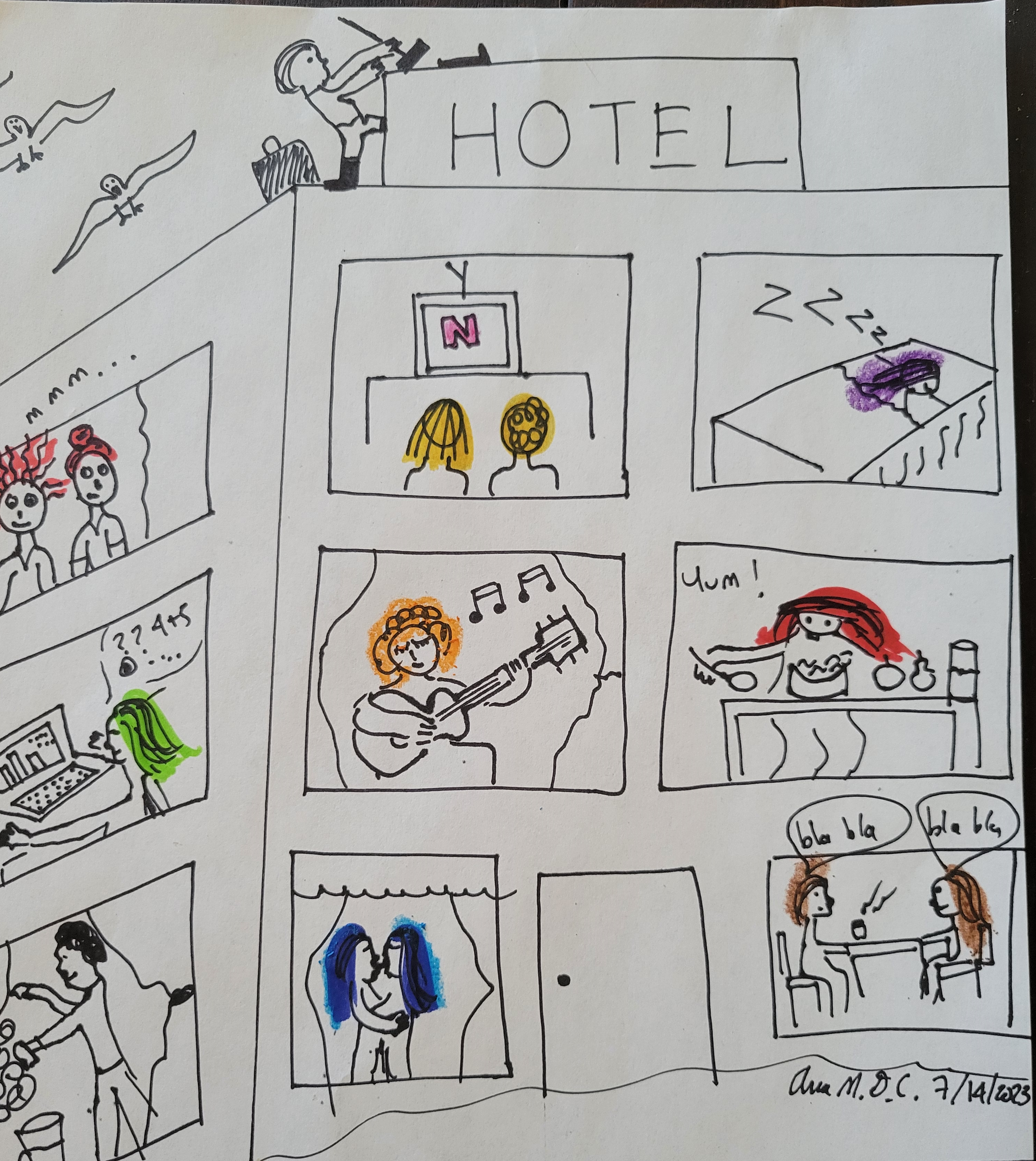49 The present progressive ING
The present progressive is used to state things that are happening right now, like when in English you say things with ING: singing, running, playing, studying. Just in Spanish you don’t use it after prepositions or to state things happening tomorrow: “I’m having a trip tomorrow” can’t be translated the same in Spanish. “I came here by riding my bike” also can’t be translated the same.
To state full sentences with ING like in “She’s writing” or “They’re working” or “Shut up that I’m trying to concentrate”, in English you add the verb to be, but en español the verbo “estar” is always required for the present progressive.
Verbo estar is conjugated this way:
- Yo estoy
- Tú estás
- Él/ella/usted está
- Nosotros/nosotras estamos
- Ellos/ellas/ustedes están
Examples with the present progressive:
- Estoy trabajando=I’m working
- Estás trabajando=you’re working
- Está trabajando=she/he’s working
- Estamos trabajando=we’re working
- Están trabajando=they’re working
The verb next to estar needs to delete AR and add ANDO. If the verb ends in ER and IR, the IENDO ending is picked.
Steps to verbs ending in AR:
- Delete the ending of the infinitive dibuj
ar=to draw - Add ANDO: dibujando. Keep the stress on the syllable before last.
- Add the verb estar conjugated according to the person: estoy dibujando (=I’m drawing)
Steps to verbs ending in ER or IR:
- Delete the ending of the infinitive com
er=to eat - Add IENDO (pronounced YENDO): comiendo. Keep the stress on the syllable before last.
- Add the verb estar conjugated according to the person referring to: estamos comiendo (=we’re eating)
If the IENDO falls right after a vowel, then the I turns into a Y and sounds a bit like English /j/:
- Leer (to read)=leyendo
- Construír (=to build)=construyendo
- Oír (=to hear)=oyendo
- Ir (=to go)=yendo
The verbo DORMIR=to sleep changes to DURMIENDO=sleeping.
If you want to talk about an ongoing action in the past, like “was talking” or “were singing”, you need to conjugate the verb “estar” in the imperfect:
Estar in the imperfect (was/were)
- Yo estaba
- Tú estabas
- Él/ella/usted estaba
- Nosotros estábamos
- Ellos/ellas/ustedes estaban
Example: “Yo estaba comiendo” (=I was eating), “¿Qué estabas haciendo?” (=What were you doing?)
Sample conversations
Your daydreaming thoughts
A: ¿En quién piensas cuando estás _____________ (add ando iendo verb)? (=Who do you think of when you are…?)
B: Cuando estoy _____________ (repeat ando iendo verb), pienso en ________________ (add person).
Sample verbs: escuchar música (=to listen to music), ver televisión (=to watch TV), tomar un selfie (=to take a selfie), mandar un correo (=to send a mail OR email), descansar (=to rest), comer helado (=to eat ice cream), comprar comida (=to buy food), leer un email (=to read an email)
Sample people: mi novio OR novia (=boyfriend or girlfriend), mi mamá (=my mom), mi papá (=my dad), mi abuelo (=my grandfather), mi abuela (=my grandmother), mi amigo OR amiga ____________ (add name)
- Pensar=to think, infinitive pensar (E to IE stem changing verb)
- Piensas=you think, pronounced /pyénsas/
- Pienso=I think, pronounced /pyénso/
- “Pensar en” means “to think in” literally, and “to think of” idiomatically
Describing an image
I am eavesdropping people inside hotel rooms. I recognize them by the hair. The picture didn’t turn out right, but I least I can see what they’re doing. Take turns to tell what these people are doing. I provided the verbo estar conjugated, you must find out the vocab word and produce the ANDO or IENDO from:
A: Los rubios (=blondes) están _________________.
B: La de pelo morado (=The woman of purple hair) está _________________.
A: La de pelo naranja (=The woman of orange hair) está _________________.
B: La de pelo rojo (=The woman of red hair) está _________________.
A: Las de pelo azul (=The women of blue hair) están _________________.
B: El de pelo café y la de pelo café están _________________.
A: Las de pelo rosado están _________________.
B: La de pelo verde está _________________.
A: El de pelo negro está ________________.
B: El que está encima del hotel está _________________.
A: Los pájaros están _________________.

I am now eavesdropping women practicing adventure sports. Taking turns, describe which one is doing each of the things. You can replicate the model from above.

Explaining disruption
Someone saw you assuming you had a negative emotion. You say you don’t have such emotion, but you were doing something when this person interrupted.
A: ¿Estás _____________ (add negative emotion)?
B: No, no estoy ____________ (repeat emotion). Es que yo estaba ____________ (add verb in the past progressive) cuando tú _______________ (add interruption in the preterit).
Negative emotions: cansado OR cansada (=tired), enojado OR enojada (=angry), triste (=sad), aburrido OR aburrida (=bored)
Sample verbs in past progressive: escuchar música (=to listen to music), ver televisión (=to watch TV), pelear con mi mamá (=to fight or argue with my mom), hablar con mi novio OR novia (=to talk to my boyfriend OR girlfriend), ganar un juego de video (=to win a video-game), orinar (=to urinate)
Sample verbs of interruption: llamar (=to call), entrar (=to come in, to enter), gritar (=to scream or yell), tocar (=to knock or to play), hablar (=to talk)
